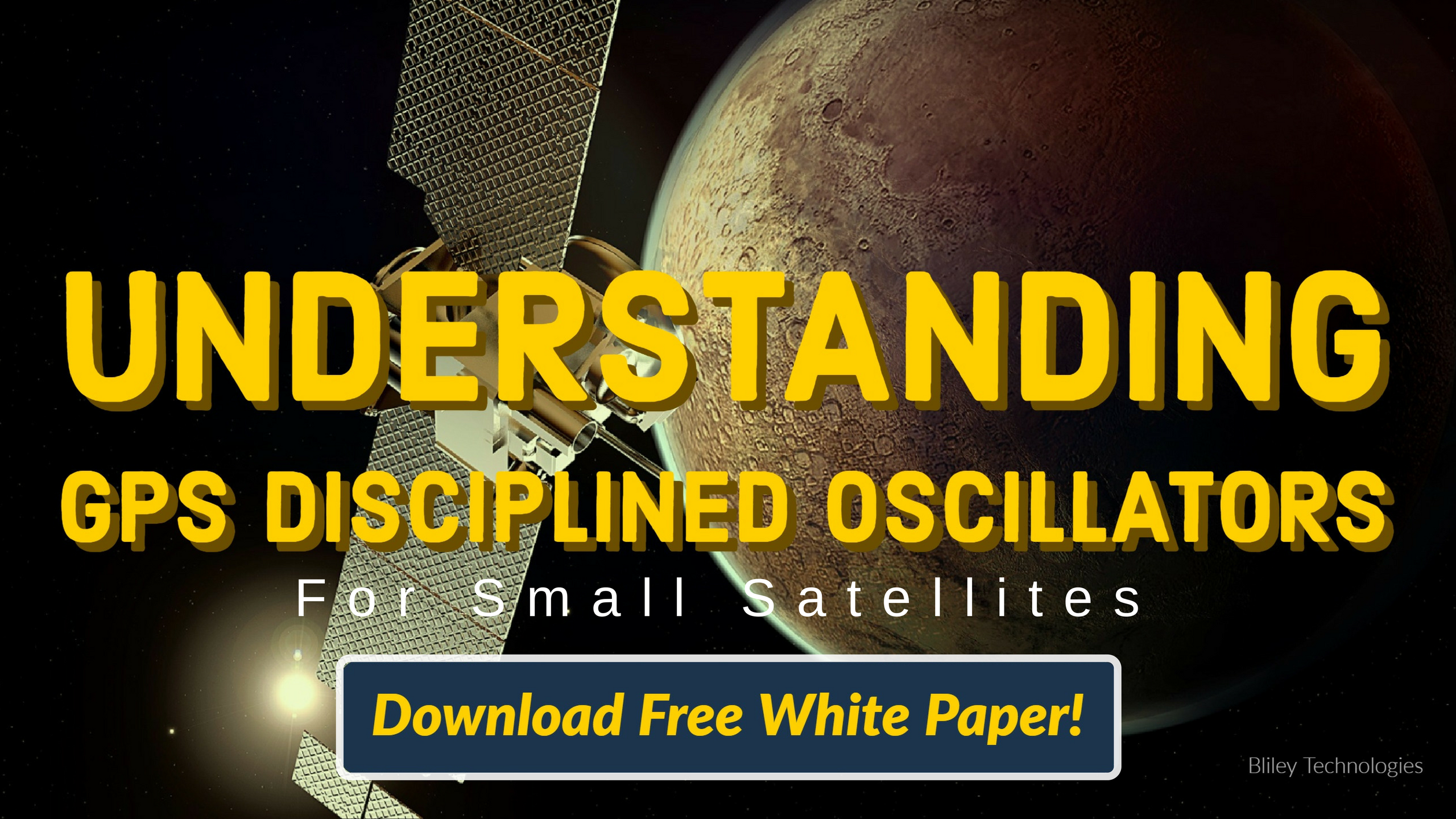
GPS disciplined oscillators (GPSDOs) are becoming a necessary component for CubeSats and other small satellites (SmallSats).
GPSDOs are comprised of a Global Position System (GPS) receiver, an oven controlled crystal oscillator (OCXO), and a phased-locked loop (PLL). In this blog, you'll get a deeper look into how GPSDOs are designed to help achieve mission success for your small satellite applications.
How GPSDOs Function in CubeSats & Other SmallSats
The Global Navigation Satellite System (GNSS), in geostationary orbit (GEO), provides a GPS signal that many use today on the ground for navigation. With a GPS receiver (along with a GPS antenna) in place on board the satellite, a very precise 1 pulse per second (1PPS) signal can be generated from the signal transmitted from the GNSS (10-12 depending on how well the GPS receiver was designed).
With the 1PPS signal from the GPS receiver, the OCXO can be steered using a phased-locked loop. The PLL essentially compares a PPS signal derived from the OCXO to the 1PPS signal generated by the GPS receiver and a control circuit adjusts the OCXO frequency to synchronize both signals at the same timing offset (or phase). The GPS receiver is a great solution for maintaining long-term frequency stability, since the stability of an OCXO degrades over time due to aging and temperature. In other words, the OCXO will experience more deviations from the desired frequency as it ages or experiences temperatures outside of its specified range.
In a GPSDO, this degradation is compensated for over time by the control circuitry in the PLL, which adjusts the frequency of the OCXO as the PLL is locking the derived PPS signal from the OCXO to the GPS 1PPS signal. But short-term stability on the 1PPS signal from the GPS receiver is quite noisy due to atmospheric fluctuations, jitter within the GPS receiver, and other noise contributors. The use of an ultra-stable OCXO for the GPSDO remedies this issue (ultra-stable quartz OCXOs can have short-term precision on the order of 10-12 or 10-13).
Related: How to Achieve Mission Success for Small SatellitesGPSDO System Design Architecture
The GPSDO design enables great short-term stability (from the OCXO) and long-term stability (from the 1PPS GPS signal). A system block diagram of the design is provided below:

Figure 1: GPSDO system block diagram
Related: What Are GPS Disciplined Oscillators (GPSDO)?
GPSDO Stability & Precision for Mission Success
In instances where a jamming signal (which causes the GPS receiver to lose lock to the GPS signal) is present, the GPSDO enables the satellite to continue operating despite the interruption. The GPSDO typically continues to output accurate and precise timing with the use of a holdover function. When lock is lost with the GNSS signal, a holdover mode allows the GPSDO to use the performance of the oscillator alone.
Commercial CubeSats and other SmallSats operating in low Earth orbit (LEO), at altitudes significantly lower than the GEO belt, can use this method as a means for timing coordination, since long-term stability is achieved via the PLL locking the derived 1PPS signal from the OCXO onto the 1PPS signal and short-term stability is achieved by using a very stable quartz OCXO.
In certain applications, such as radar imaging or phased array applications for geolocation, if the timing is not precise, the data captured from the sensors will be inaccurate or junk, leading to an unsuccessful mission. That makes GPSDOs critical for mission success.
Related: GPSDOs vs. Atomic Clocks: Which Work Best for LEO, MEO, & GEO Satellites?
What Will You Achieve with Bliley on Board?
Do you need a GPSDO to help ensure mission success for your CubeSat or other SmallSat? Browse our space oscillators specifically designed for LEO applications or explore our full line of space solutions.






